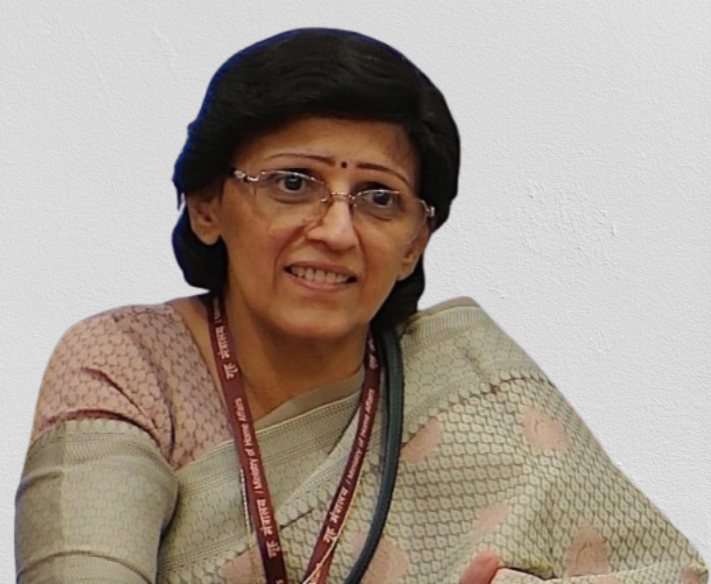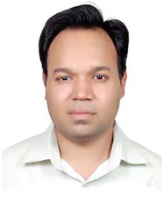Integrated Disease Surveillance Programme (IDSP)
Objectives
- 1To strengthen/maintain decentralized laboratory-based IT enabled disease surveillance system for epidemic-prone diseases to monitor disease trends and to detect and respond to outbreaks in early rising phase through trained Rapid Response Team (RRTs).
Programme Components
- 1Integration and decentralization of surveillance activities through the establishment of surveillance units at Centre, State and District level.
- 2Human Resource Development – Training of State Surveillance Officers, District Surveillance Officers, Rapid Response Team and other Medical and Paramedical staff on principles of disease surveillance.
- 3Use of Information Communication Technology for collection, collation, compilation, analysis and dissemination of data.
- 4Strengthening of public health laboratories.
- 5 Inter sectoral Co-ordination for zoonotic diseases.
Data Management
Under IDSP data is collected on epidemic-prone diseases on weekly basis (Monday–Sunday). The information is collected on three specified reporting formats, namely “S” (suspected cases), “P” (presumptive cases) and “L” (laboratory confirmed cases) filled by Health Workers, Clinicians and Laboratory staff respectively. The weekly data gives information on the disease trends and seasonality of diseases.
Whenever there is a rising trend of illnesses in any area, it is investigated by the Rapid Response Teams (RRT) to diagnose and control the outbreak. Data analysis and actions are being undertaken by respective State/District Surveillance Units. In the month of February 2018, about 96% Districts have reported weekly disease surveillance data from districts.
Outbreak Surveillance and Response
CSU, IDSP receives disease outbreak reports from the States/UTs on weekly basis. Even NIL weekly reporting is mandated and compilation of disease outbreaks/alerts is done on weekly basis. On an average 30- 35 outbreaks are reported to CSU weekly. A total of 553 outbreaks were reported in 2008, 799 outbreaks in 2009, 990 outbreaks in 2010, 1675 outbreaks in 2011 and 1584 outbreaks in 2012, 1964 outbreaks in 2013, 1562 outbreaks in 2014, 1935 outbreaks in 2015, 2679 outbreaks reported in 2016 and 1714 outbreaks reported in 2017.
A total of 133 outbreaks reported from 1st January 2018 to 4th February 2018. Majority of outbreaks reported in 2018 were of Measles (28%), Chickenpox (23%), Food Poisoning (14%), Acute Diarrheal Disease (12%), Chikungunya (5%), Influenza-B (3%), Scrub typhus (3%), and Dengue (2%).
Media Scanning and Verification Cell
- 1Media scanning is an important component of surveillance to detect the early warning signals. Media scanning and verification cell daily receives an average of 2-3 media alerts of unusual health events which are detected and verified. A total of 4815 health alerts have been detected till 28th February 2018 since its establishment in July 2008. Majority of them were Acute Diarrheal Disease, Measles and Dengue. A total of 35 media alerts were scanned for any unusual from 1st February 2018 till 28th February 2018.
- 2The process of establishing Media Scanning and Verification Cells in all 29 States and 7 UTs is being undertaken right now.
Staff Details
National Programme Officer

Dr. Sunita Sharma
DGHS
Other Officers in the Project

Dr. Saurabh Goel
Joint Director

Dr. Sanket V Kulkarni
Joint Director

Dr. Pranay Kumar Verma
Joint Director

Dr. Shubhangi Kulasange
Joint Director

Dr Shikha Vardhan
Joint Director
Activities
Information & Communication Technology Network (ICT)
ICT plays an integral and most powerful role in implementing IDSP across the country. One of the important
components of the programme is data management, analysis and rapid communication in case of outbreaks.
a) Data Centre
National Informatics Centre (NIC) has installed Data Centre Equipment at 776 out of 800 sites. The
objective of Data Centre is online data entry for speedy data transmission from Districts.
b) Training Centre (NIC)
Training Centre Equipments have been installed at 378 out of 400 sites. State to District communication
is possible by NICs E-Learning Portal (http://e-learning.nic.in/lms), which has facility in managing
live virtual classrooms for training (State/Area specific discussion on disease surveillance
activities), e-learning, interactive electronic discussion (Chat rooms, Boards, Mailing Lists) and
reviewing and monitoring programme related activities.
C) Training Centre (ISRO)
Indian Space Research Organization (ISRO) has installed training centre at 367 out of 400 sites
(EDUSAT/VSAT). Satellite connectivity is not available since Sept 2010. Recently, ISRO has allocated the
bandwidth and has started migration of network from GSAT 3 to GSAT 12 to restart the satellite
connectivity.
SHOC (Strategic Health Operations centre) established at CSU (IDSP), NCDC.
D) IDSP Portal
The IDSP portal is a one-stop portal (www.idsp.nic.in) which has facilities for data entry, view reports,
outbreak reporting, data analysis, training modules and resources related to disease surveillance. About
96% of Districts are now reporting disease surveillance data in portal.
Training
ICT plays an integral and most powerful role in implementing IDSP across the country. One of the important
components of the programme is data management, analysis and rapid communication in case of outbreaks.
a) The Training in IDSP is three-tiered
Master Trainers State and District Surveillance Officers and RRT members are trained at identified
National level institutes.
The Medical Officers and District Lab Technicians are trained by Master Trainers at State level.
Health Workers & Lab Technician/Assistants at peripheral institutions are trained by District
Surveillance officers/Medical Officers at District level.
b) Training of State/District Surveillance Teams has been completed in all 36
States/UTs.
The main focus of training for State level participants is on basics of disease surveillance, concepts of
epidemiology and data management, whereas the District training focuses on correct procedures of data
collection, compilation and reporting and outbreak response. A need based special two-week Disease
Surveillance and Field Epidemiology Training Programme (FETP) have been initiated for the District
Surveillance officers. 770 District Surveillance Officers have already been trained in this special 2-
week FETP.
State Health Societies were requested in June 2010 to recruit contractual manpower under IDSP. 455
Epidemiologists, 164 Microbiologists, 24 Entomologists, and 14 Veterinary Consultants have joined in
States and Districts as per 28th February 2018. States has been requested to expedite the filling up the
remaining contractual positions at the State/Districts levels. Induction training has been given to
majority of them.
Strengthening of Laboratories:
District laboratories are being strengthened for diagnosis of epidemic-prone diseases in a phased manner. Till
date, 259 District Public Health Labs has been approved for strengthening, out of which 138 DPHLs are performing
tests as per IDSP standards. These labs are being supported by trained manpower, funds for essential equipment
and an annual grant of Rs 4 lakhs per annum per lab for reagents and consumables.
A State-based referral laboratory network has been established by utilizing the existing functional labs in the
identified medical colleges and other major centers in the states and linking them with adjoining districts for
providing diagnostic services for epidemic-prone diseases during outbreaks. Presently this network is functional
in 23 States/UTs involving 108 labs.
Prevention and Control of Avian/H1N1 Influenza:
12 Laboratories are functional, for testing clinical samples of Influenza A H1N1 in different regions of the
country.
Inter-sectoral coordination with Animal husbandry department:
25 states have included Veterinary Officers in the State and District Rapid Response Team to achieve
inter-sectoral coordination to combat zoonotic diseases in India.
Finance:
Budget and Expenditure for IDSP is as under:- (Rs in crores/ as on 28th February 2018)
| Sr No. | Year | Budget Estimates (Rs. In crores) | Expenditure (Rs. In crores) |
|---|---|---|---|
| 1. | 2010-11 | 35.00 | 48.98(43.58+5.40*) |
| 2. | 2011-12 | 63.00 | 27.83 |
| 3. | 2012-13 | 63.00 | 33.11 |
| 4. | 2013-14 | 63.00 | 49.98** |
| 5. | 2014-15 | 63.00 | 55.65 |
| 6. | 2015-16 | 64.35 | 64.44 |
| 7. | 2016-17 | 68.35 | 63.05 |
| 8. | 2017-18 | 68.35 | 57.13 |
Note
1: * Rs. 5.40 crores released to North-East State Health Societies which has been diverted from Rural Family Welfare Services
2:**The actual expenditure has been incurred for IDSP amounting to Rs.36.52 Crores. In addition to that amount IDSP has released an amount of Rs.13.44 Crores as Grant-in-Aid to State Health Societies on behalf of NVBDCP. So the total expenditure comes to Rs.49.98 Crores.










